News feed
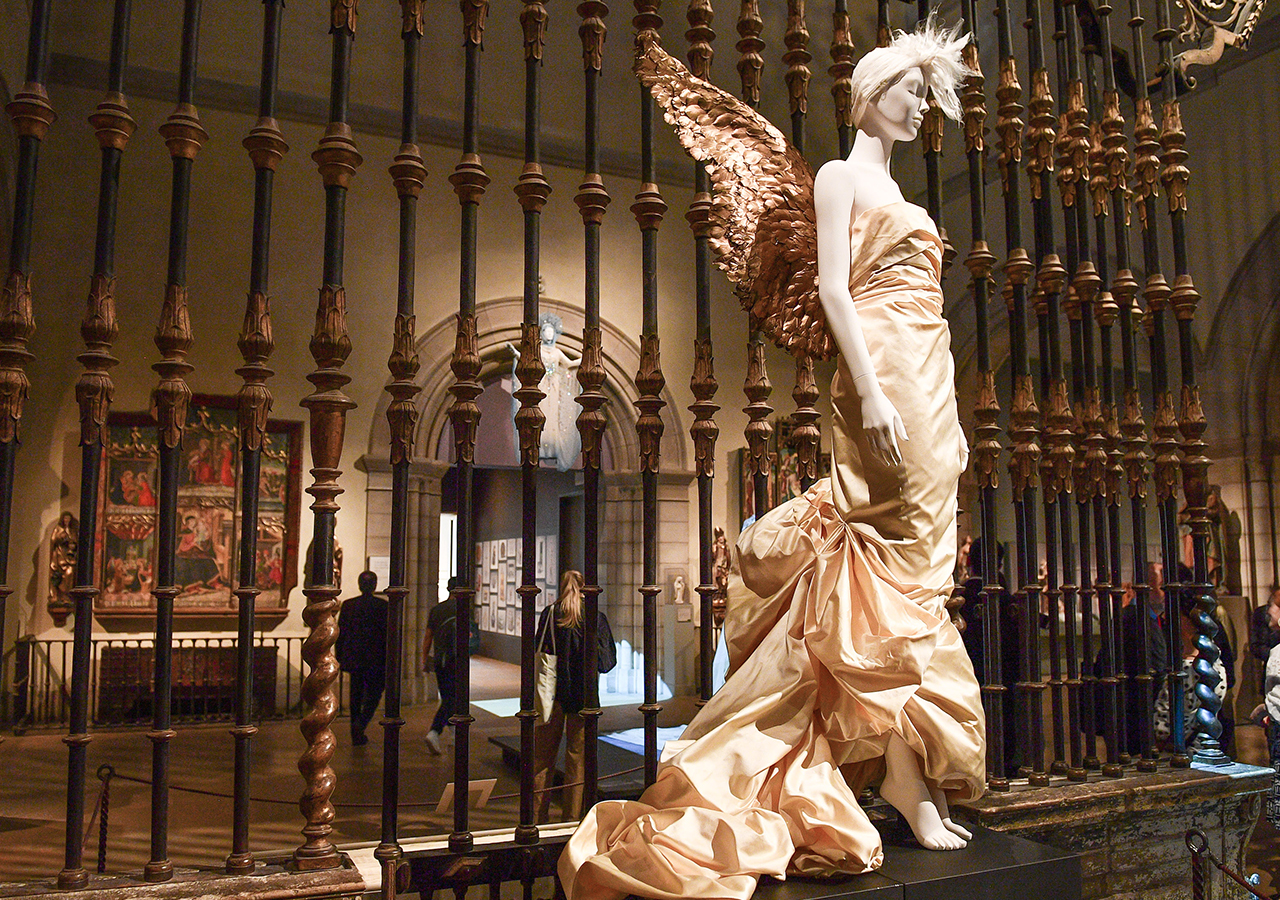
In the era of fast fashion and favouring function over theatrics when it comes to getting dressed, it’s easy to forget clothing can be a way to transcend the everyday.
The Costume Institute’s annual Met Gala is a rare opportunity to celebrate clothing as art, not just mere consumer product, and this year the worship of fashion is taken to a new level. After A-list guests pose for photographs on the steps of The Met Fifth Avenue and enter its hallowed halls, they’ll experience the museum’s extraordinary new collection: Heavenly Bodies: Fashion and the Catholic Imagination.
Open to the public on May 10 and on show until October 8, Heavenly Bodies is an exploration of the role of fashion in the Catholic church throughout history, and also how Catholic iconography has influenced major designers such as Versace, Valentino, Dolce & Gabbana, Galliano, Mugler and Yves Saint Laurent. It’s also the biggest exhibition in the Costume Institute’s history, spanning 5,500 square metres.
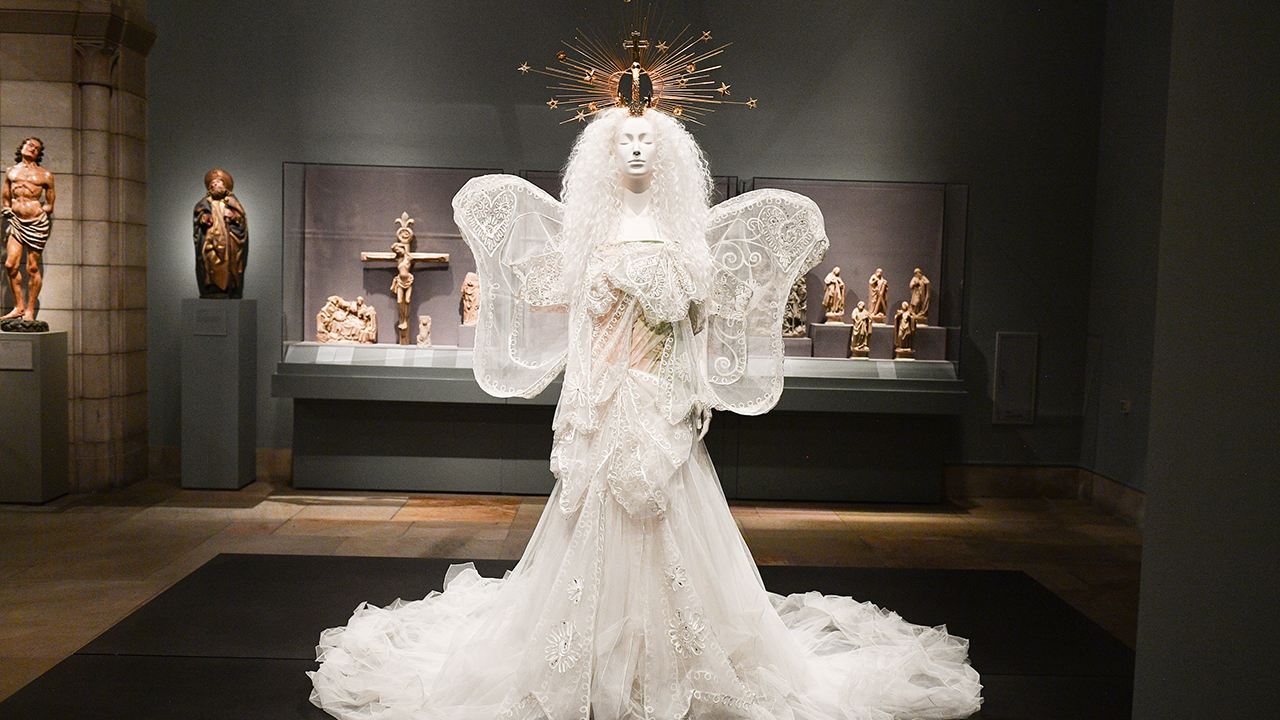
The result is a compelling mix of 42 precious items normally under lock and key at the Sistine Chapel sacristy, never before seen outside the Vatican, and 150 modern haute couture designs inspired by Catholic imagery. The former are presented in the Anna Wintour Costume Center at the Met’s main space on Fifth Avenue, and also at The Cloisters, the Met’s museum of medieval art in upper Manhattan (fittingly, you’ll have to make a public transport pilgrimage to see the entire collection).
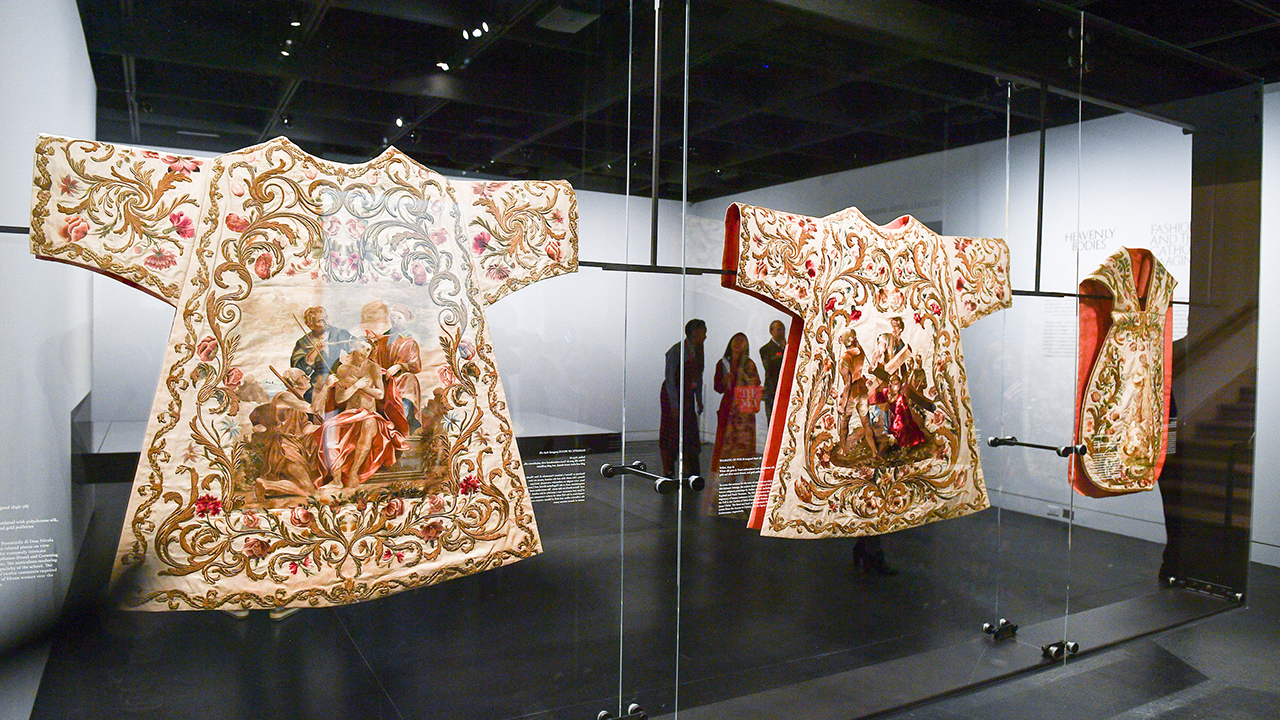
Peering through the glass at the intricately designed robes, jewel-encrusted ceremonial headdress and opulent jewellery worn by popes and other important figures in the church, some dating back as far as the early 1800s, it becomes apparent that Catholics have used dress as a way to represent the intangible elements of the religion in the material world. Perhaps a spiritual purpose serves as motivation and inspiration to create beautiful things: a collection of 12 white silk embroided robes worn by Pope Pius IX, who reigned from 1846 – 78, was made by 15 female students at an Italian fashion institute over a period of 16 years.
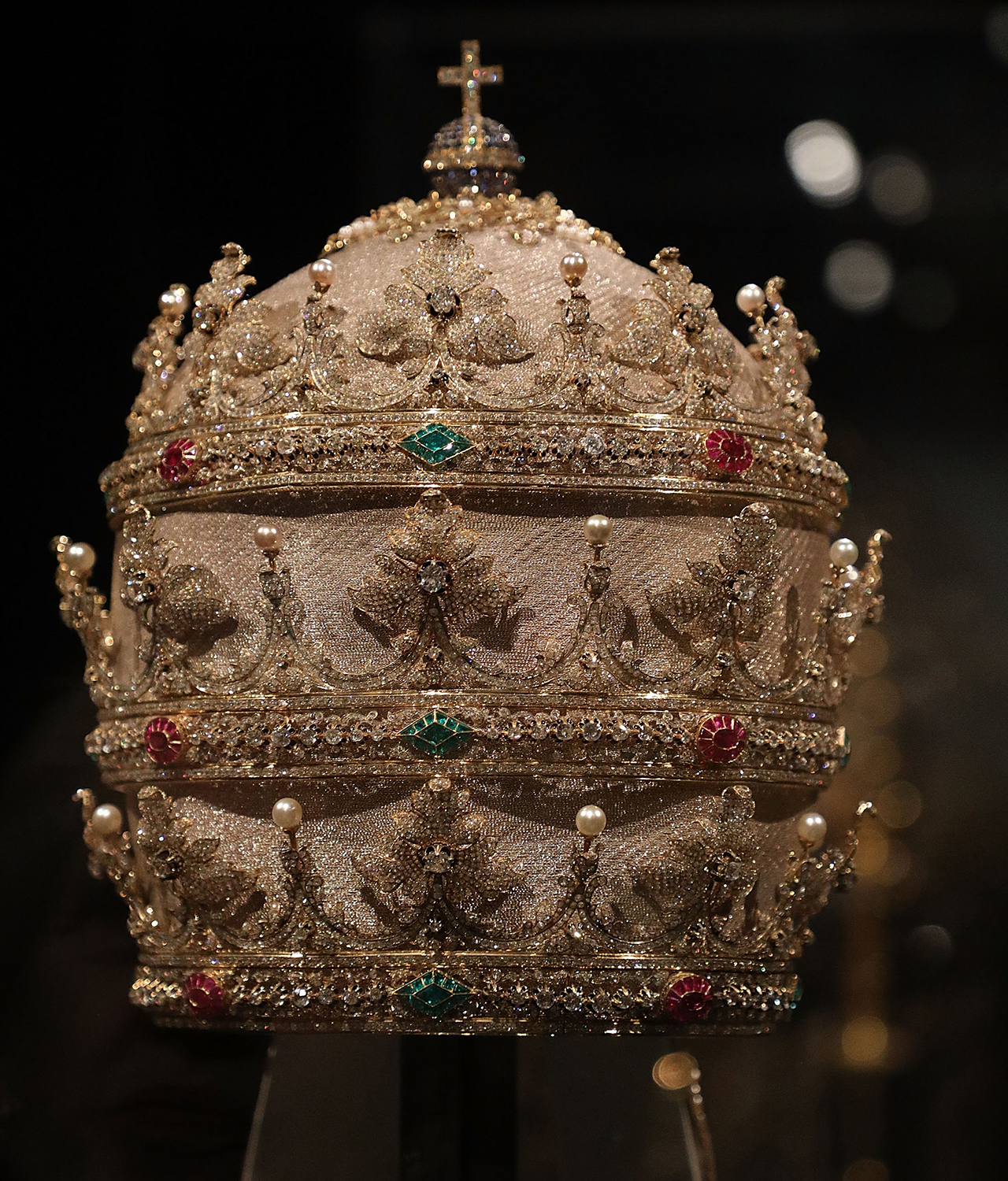
While it’s unlikely any of the garments in the contemporary section took a decade and a half to make, the haute couture pieces, presented in the Medieval and Byzantine Art wing, are no less dazzling to look at. With dramatic choir music playing and finger-of-god-style spotlights shining down on the designs, worshipping at the altar of fashion is not a metaphor here.
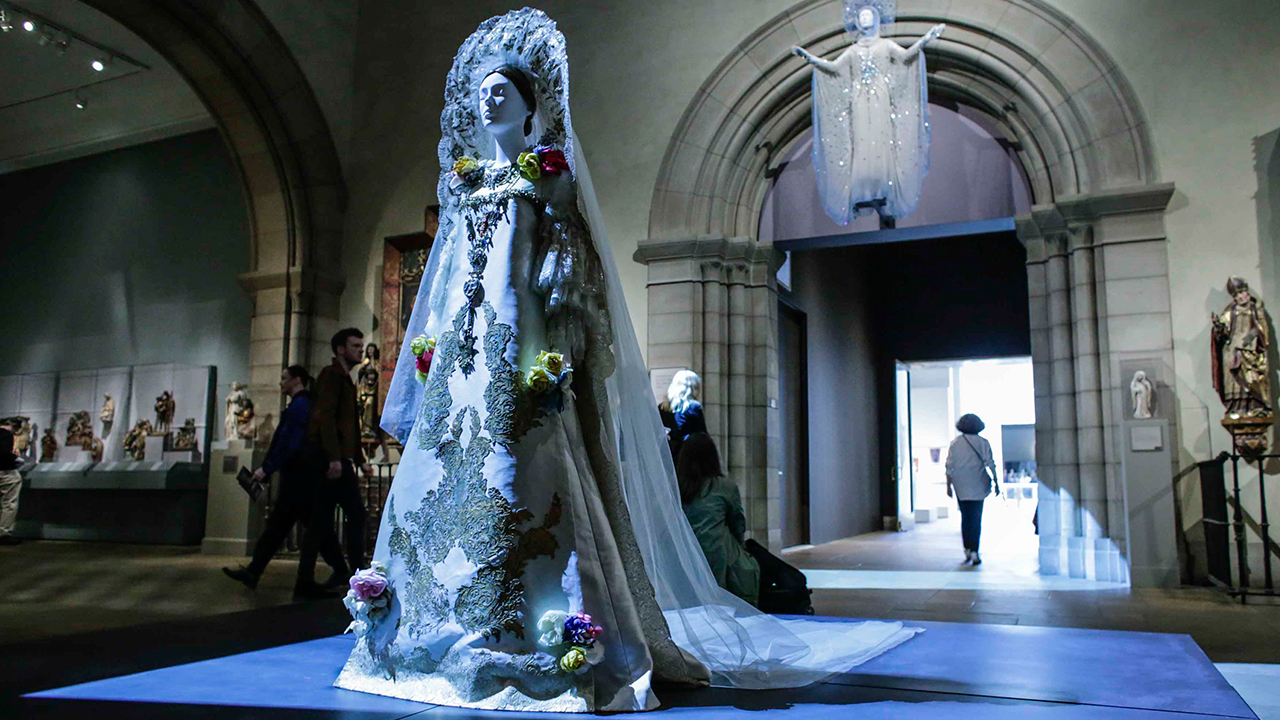
Among the items leaving fashionistas in awe-struck silence was a dramatic, floor-length red silk taffeta dress from Valentino’s autumn/winter 17/18 collection, inspired by a traditional cape worn as choir dress by cardinals and bishops for special or solemn occasions.
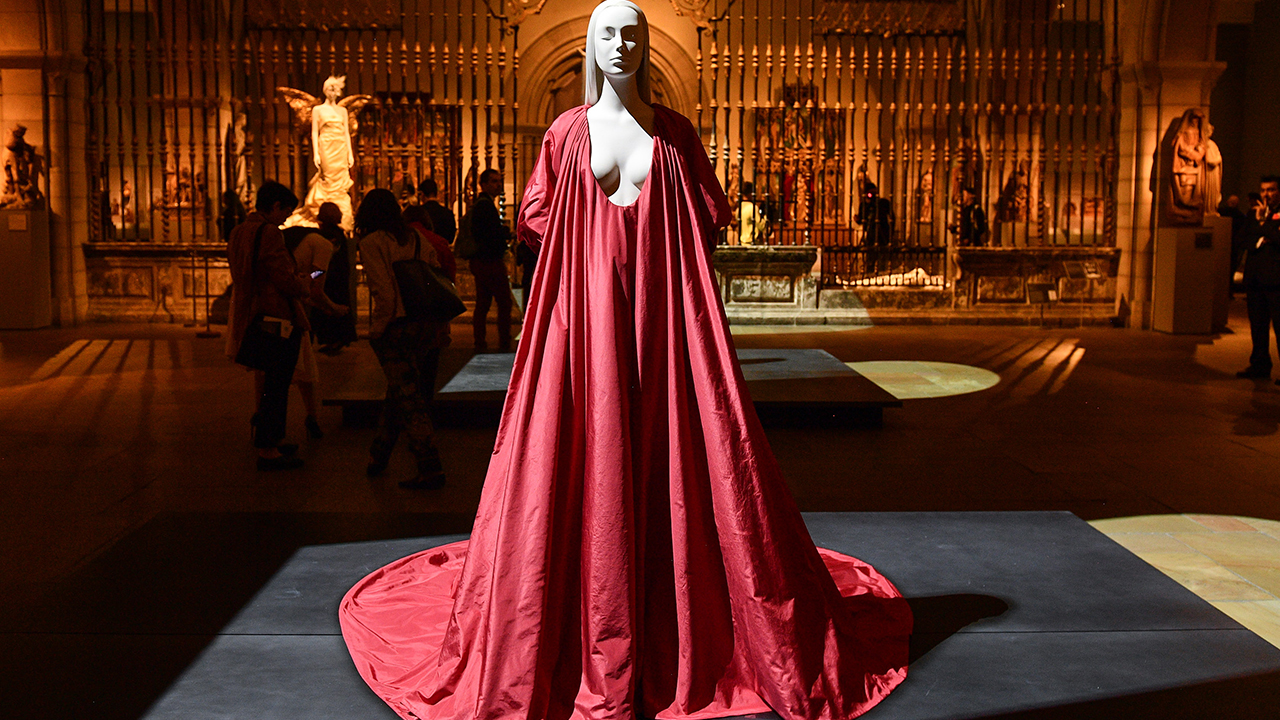
An ethereal Yves Saint Laurent wedding ensemble from autumn/winter 1977 – 78, made of ivory silk crepe, Chantilly lace and organza is another must-see, as is the gold silk lamé Thierry Mugler dress from the autumn/winter 1984 – 85 collection with piqued shoulders and a train.
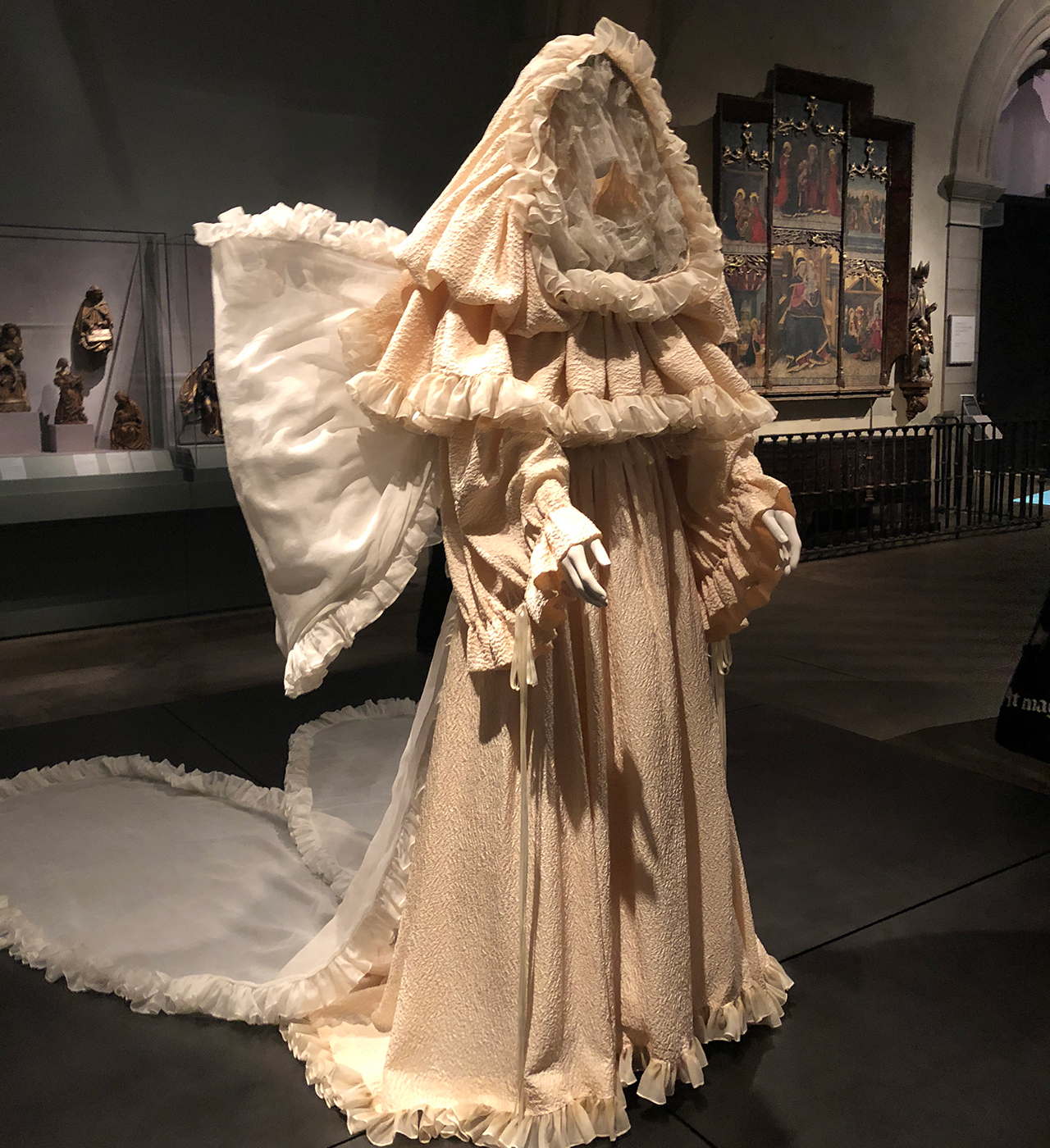
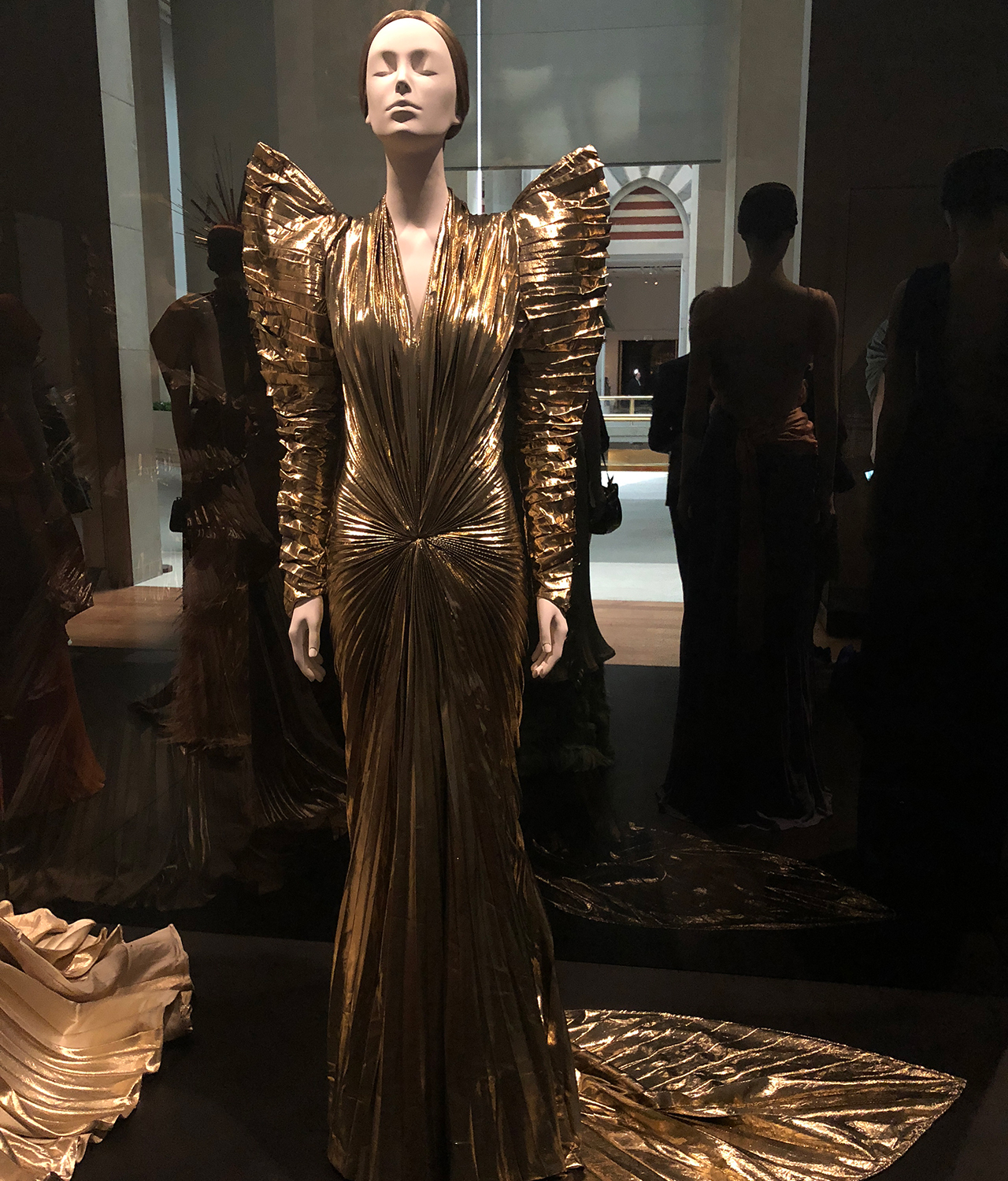
Most of the pieces could not be described as ‘wearable’, save for a Versace black leather motorcycle jacket with elaborate jeweled crosses on the back from the spring/summer 2018 collection, eyed hungrily by every fashionista who walked by.
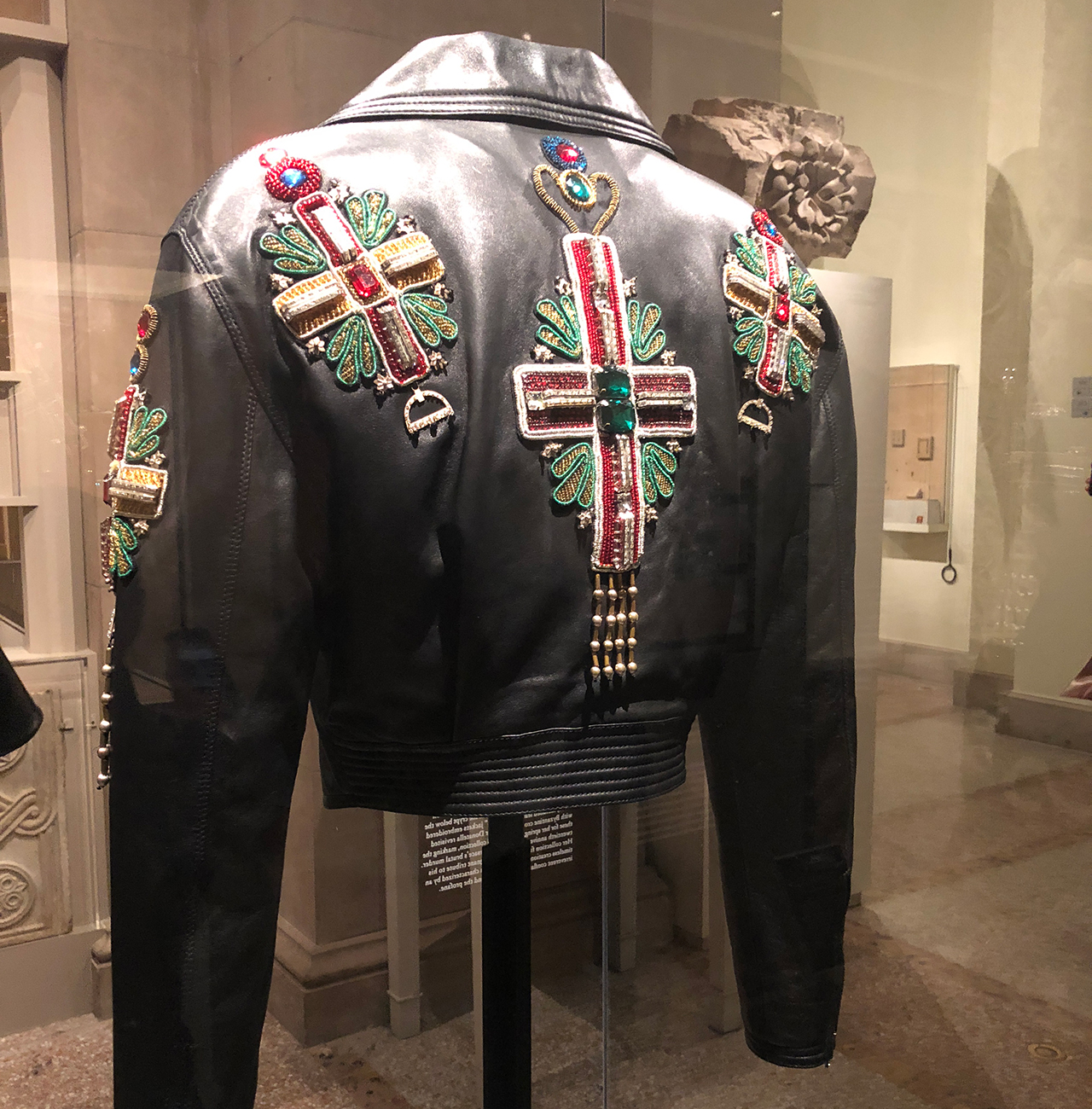
In his opening remarks to press at a preview on Monday, Andrew Bolton, Head Curator of the Metropolitan Museum of Art’s Costume Institute, read from a book called The Catholic Imagination by Andrew Greeley.
“Catholics live in an enchanted world: a world of statues and holy water, stained glass and votive candles, saints and religious medals, rosary beads and holy pictures,” he said.
“But these Catholic paraphernalia are merely hints of a deeper and more pervasive religious sensibility that inclines Catholics to see the Holy lurking in creation.”
Heavenly Bodies seems to be making the case, however subtly, it was at mass that young future visionaries of the fashion world fostered their imaginations and appreciation of beauty and aesthetics. Is that enough to get lapsed Catholics back to church? That might be asking for a miracle. But it could reawaken, at least in some, the desire to skip the athleisure every now and then for something more divine.
Heavenly Bodies: Fashion and the Catholic Imagination is on display at The Met Fifth Avenue and The Met Cloisters (upper Manhattan) from May 10 until October 8, 2018. For more, visit The Metropolitan Museum of Art website.










